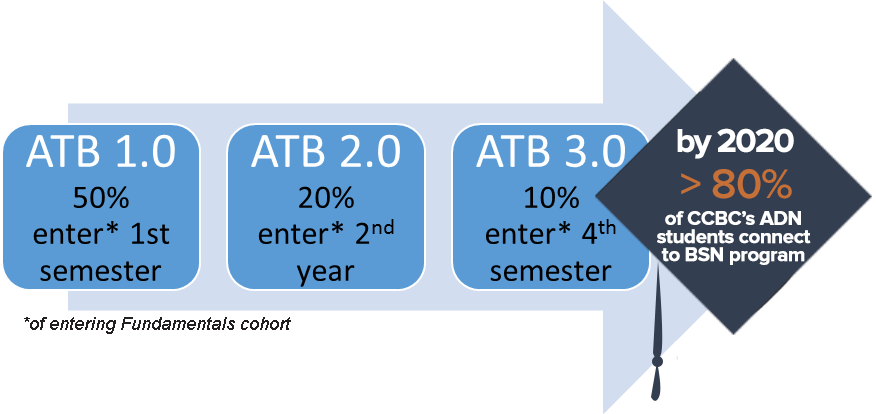Overview of the ATB Option
Since the release of the 2011 Institute of Medicine report with its recommendation that 80% of nurses have BS degrees by 2020, nurse educators have examined ways to produce a more highly educated nursing workforce. In response, CCBC Nursing has initiated a cost-effective, dual enrollment Associate to Bachelor’s (ATB) Nursing Degree Option to help meet this goal. ATB is designed for qualified associate degree nursing students who begin bachelor’s coursework at one participating university while enrolled in the CCBC A.S. degree Nursing Program. In this year round study option, students take the NCLEX-RN upon meeting the associate degree requirements, begin employment as registered nurses and then complete remaining courses for the B.S. degree, part-time, in approximately 2-3 additional terms. The ATB Option was created and launched with a pilot group of 17 students by CCBC and Towson University in fall 2012. NSPII grant funding allowed for expansion of the model and by fall 2015, 63 of CCBC’s incoming nursing students were dually enrolled with one of four partner universities:











